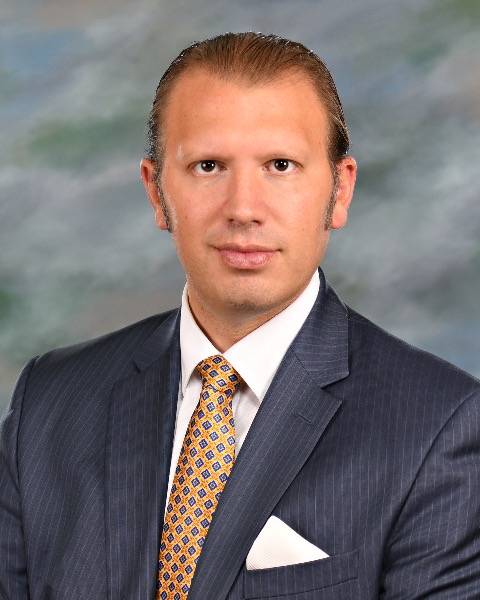Spine
Outcomes of Circumferential Minimally-Invasive Technique in Adult Spinal Deformity Surgery Patients with Severe Baseline Deformity
Outcomes of Circumferential Minimally-invasive Technique in Adult Spinal Deformity Surgery Patients with Severe Baseline Deformity

Peter G. Passias, MD
Professor
Duke University
Duke University Heath System
New Canaan, CT, US
Presenting Author(s)
Introduction: Circumferential minimally-invasive surgery(cMIS) techniques specifically in ASD surgery may provide benefit in reducing physiologic burden, but the utility of such surgeries in patients with severe deformity has not been assessed.
Methods: Operative ASD patients≥18yrs with complete BL and 2Y radiographic/HRQL data were assessed. Propensity score matching (PSM) aligned cMIS vs Open groups by BL CCI, C7-S1 SVA, and PI-LL. Patients with severe deformity as defined by meeting at least one SRS-Schwab severe deformity marker or coronal Cobb > 50°. A deformity severity score was also created(total: 4) based on presence of severe SRS-Schwab marker(+1/modifier), and split into ≤2(Low) versus >2(High).
Results: Of 872 patients(62.85±13.93years, 75.7%female, 29.23±6.64kg/m2) considered, 174 patients were included after PSM, split evenly between cMIS and Open. At baseline, 64.5% of open was severely deformed, compared to 56.8% of cMIS(p=.171). Of severe deformity, 8.2% underwent cMIS and 89.9% underwent Open surgery. At baseline, cMIS was older(70.41 vs 63.79years,p <.001), but comparable in CCI, BMI, and frailty(all p>.05). cMIS presented with higher ODI(p=.045) and SF-36 Physical Role domain(p=.034). Perioperatively, cMIS had less operative time, EBL, LOS, SICU time(all p<.001), and suffered fewer intraoperative complications overall(p=.036) even when accounting for age, CCI, and levels fused. By 2Y, cMIS showed comparable improvement in ODI, SF-36, SRS-22, and all subcomponents(all p>.05). cMIS suffered less complications overall(p=.047) and were significantly less likely to suffer PJK by 6W(p=.021) and 1Y(p=.041). Open was more likely to require reoperation for screw loosening (p=.008), though cMIS was more likely to undergo reoperation for screw nerve impingement (p=.001). When assessing increasing deformity score, no significant differences in technique used(p>.05). Controlled/uncontrolled logistic regression demonstrated cMIS and Open were comparable in reaching SAAS targets by 2Y, and BCO by ODI or SRS(all models p>.05). This was also true throughout the range of deformity severity scores(all p>.05).
Conclusion : For ASD patients with severe radiographic malalignment, c-MIS may offer reduced risk of intraoperative complications, PJK/PJF, and postoperative implant failure requiring reoperation. However, open technique may reduce risk of reoperation due to neurological sequelae.
Methods: Operative ASD patients≥18yrs with complete BL and 2Y radiographic/HRQL data were assessed. Propensity score matching (PSM) aligned cMIS vs Open groups by BL CCI, C7-S1 SVA, and PI-LL. Patients with severe deformity as defined by meeting at least one SRS-Schwab severe deformity marker or coronal Cobb > 50°. A deformity severity score was also created(total: 4) based on presence of severe SRS-Schwab marker(+1/modifier), and split into ≤2(Low) versus >2(High).
Results: Of 872 patients(62.85±13.93years, 75.7%female, 29.23±6.64kg/m2) considered, 174 patients were included after PSM, split evenly between cMIS and Open. At baseline, 64.5% of open was severely deformed, compared to 56.8% of cMIS(p=.171). Of severe deformity, 8.2% underwent cMIS and 89.9% underwent Open surgery. At baseline, cMIS was older(70.41 vs 63.79years,p <.001), but comparable in CCI, BMI, and frailty(all p>.05). cMIS presented with higher ODI(p=.045) and SF-36 Physical Role domain(p=.034). Perioperatively, cMIS had less operative time, EBL, LOS, SICU time(all p<.001), and suffered fewer intraoperative complications overall(p=.036) even when accounting for age, CCI, and levels fused. By 2Y, cMIS showed comparable improvement in ODI, SF-36, SRS-22, and all subcomponents(all p>.05). cMIS suffered less complications overall(p=.047) and were significantly less likely to suffer PJK by 6W(p=.021) and 1Y(p=.041). Open was more likely to require reoperation for screw loosening (p=.008), though cMIS was more likely to undergo reoperation for screw nerve impingement (p=.001). When assessing increasing deformity score, no significant differences in technique used(p>.05). Controlled/uncontrolled logistic regression demonstrated cMIS and Open were comparable in reaching SAAS targets by 2Y, and BCO by ODI or SRS(all models p>.05). This was also true throughout the range of deformity severity scores(all p>.05).
Conclusion : For ASD patients with severe radiographic malalignment, c-MIS may offer reduced risk of intraoperative complications, PJK/PJF, and postoperative implant failure requiring reoperation. However, open technique may reduce risk of reoperation due to neurological sequelae.

.jpg)